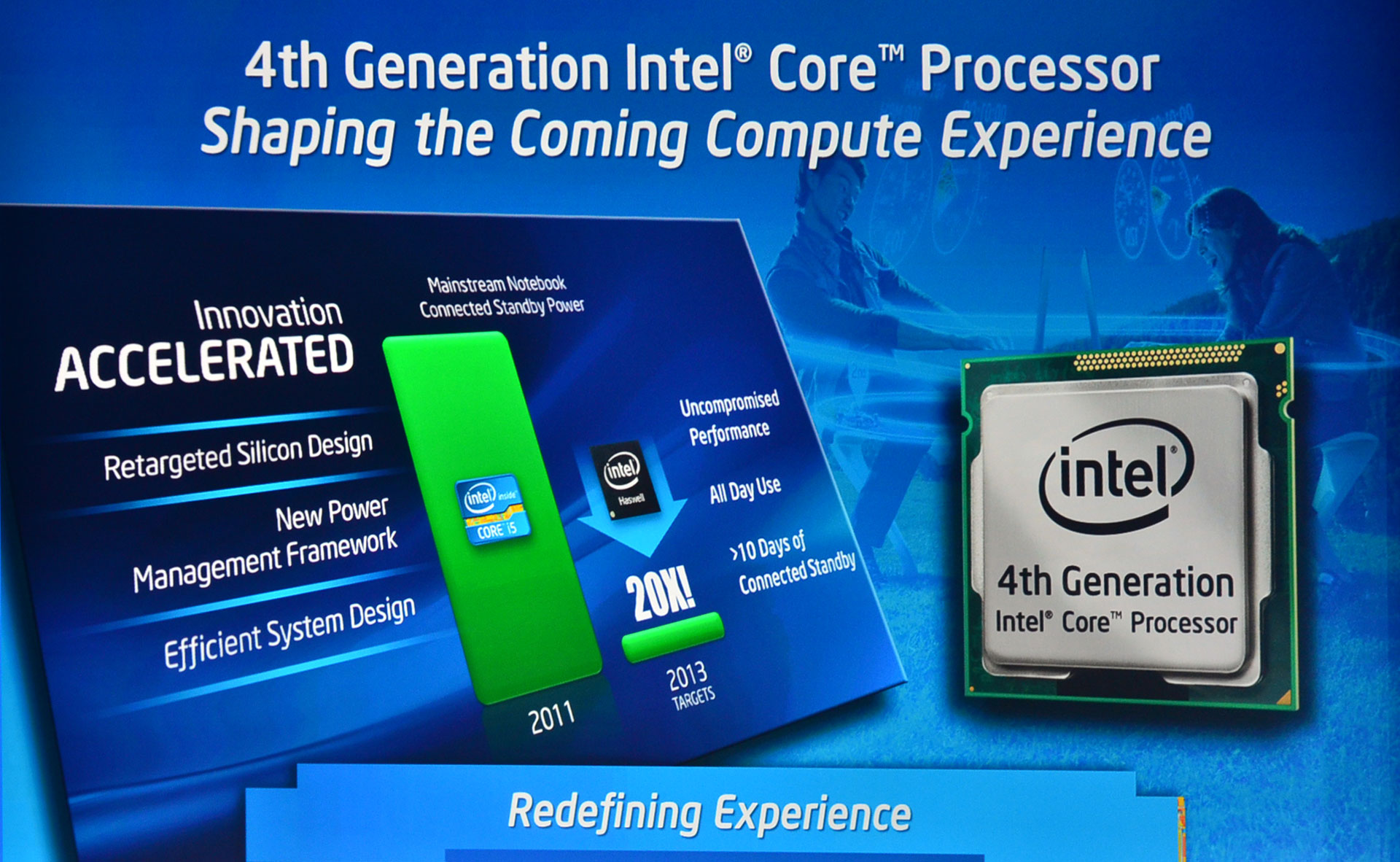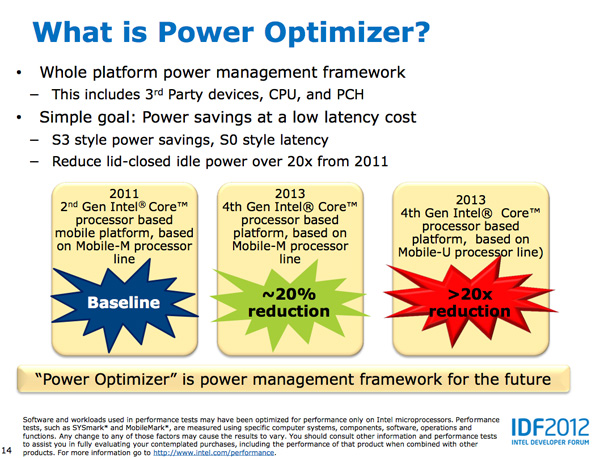Silent_Buddha
Legend
Interesting, this...
http://www.dailytech.com/article.aspx?newsid=29584
Seems to imply that Intel is showing off a 13" reference design using Haswell that is getting 13 hours of battery life in laptop form and 10 hours in tablet mode (detached from keyboard).
That is pretty impressive for the Core architechture chips.
Granted, there's no info from there on the specs of the reference design (how large is the battery? what's the weight of the tablet portion? how fast is the CPU running? etc.)
Regards,
SB
http://www.dailytech.com/article.aspx?newsid=29584
Seems to imply that Intel is showing off a 13" reference design using Haswell that is getting 13 hours of battery life in laptop form and 10 hours in tablet mode (detached from keyboard).
That is pretty impressive for the Core architechture chips.
Granted, there's no info from there on the specs of the reference design (how large is the battery? what's the weight of the tablet portion? how fast is the CPU running? etc.)
Regards,
SB




